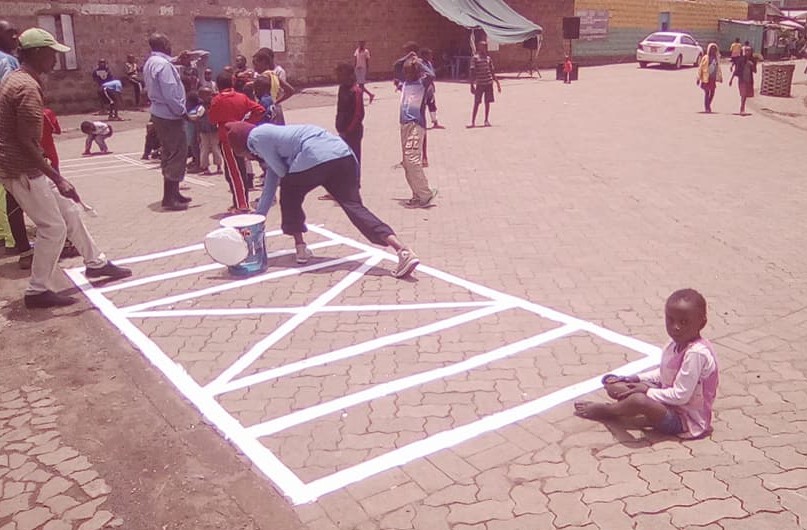
Keep up with our latest news and projects!

Dandora is a low-income estate in Nairobi, previously known as a dangerous and dirty no-go zone: unemployed youth often turned to crime and streets and open spaces used to be covered by litter. Moreover, presence of one of the largest unregulated landfills in the world has contributed to its bad reputation. In 2014, a group of residents, who could no longer watch their children play with garbage, decided to change this status quo. They started to transform open spaces surrounded by residential plots, known as courtyards, from dumping sites into clean playgrounds and gardens. A few months after the first spontaneous action by residents, a community-based organisation, mobilising youths around the courtyard system, was officially registered as Dandora Transformation League (DTL). The work of DTL has led to the emergence of child-friendly environment from three perspectives: design (hardware), use of spaces (software) and organization of functions (orgware).
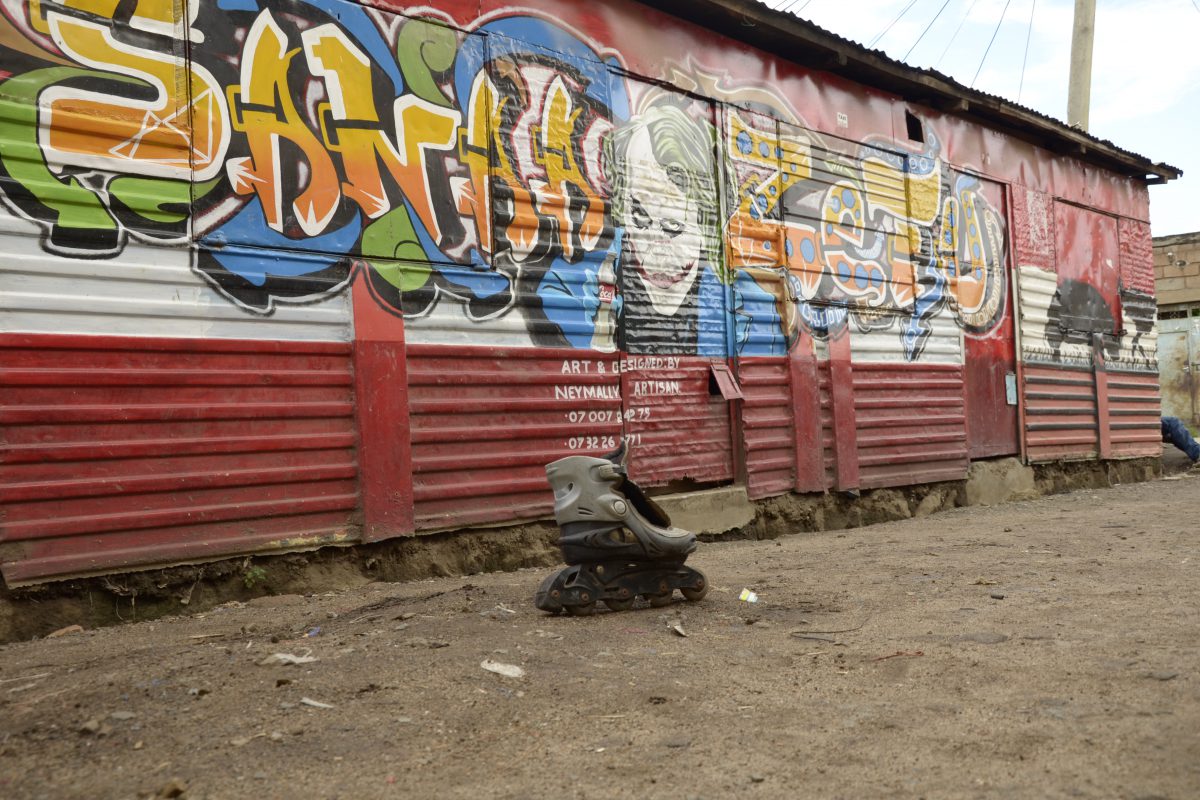
From a design perspective, the community has been part of the design process at three different levels, which have resulted in the creation of child-friendly spaces in the neighbourhood. Firstly, through the courtyard system, youths regenerate and maintain their courtyards. The system was scaled up to the entire neighbourhood through a gamification approach: Changing Faces Competition mobilises youth groups around who does the best public space transformation. 1There are different categories of judging criteria: one of them is child-friendliness of spaces. The courtyard system has completely changed the face of Dandora: it has become safer, healthier, with many accessible places to play in. Safety has improved mostly due to engaging unemployed youth, many of whom used to be involved in crime, around meaningful activities providing them with income-generating opportunities and regaining the trust of the rest of the community. Youth groups also ensure security of courtyards at night. Furthermore, schools have observed reduction of illnesses among pupils as result of playing in a cleaner and greener environment.
Secondly, Model Street project in partnership between DTL, UN-Habitat and organizations-experts in placemaking and human-centred design, engaged the community in designing their ideal street using Minecraft. During the workshop, children designed gateways representing a welcoming entry to the neighbourhood. The idea was eventually implemented as an innovative public space project.
Thirdly, to better understand how children perceive open spaces, DTL in collaboration with East-Africa Institute (Aga Khan University) has run a series of exercises enabling children to express their feelings about the surrounding spaces. Through drawing, card-sorting and photography, children show elements they like and dislike in their space. The biggest concern brought up by children were dark corners and desire to have more street lightening in the area. They also mentioned abandoned cars take up play space and would like to improve the neighbourhood by painting streets, planting flowers and introducing more dust bins. The results are used to inform design of spaces to create a genuine child-enabling environment in the neighbourhood.
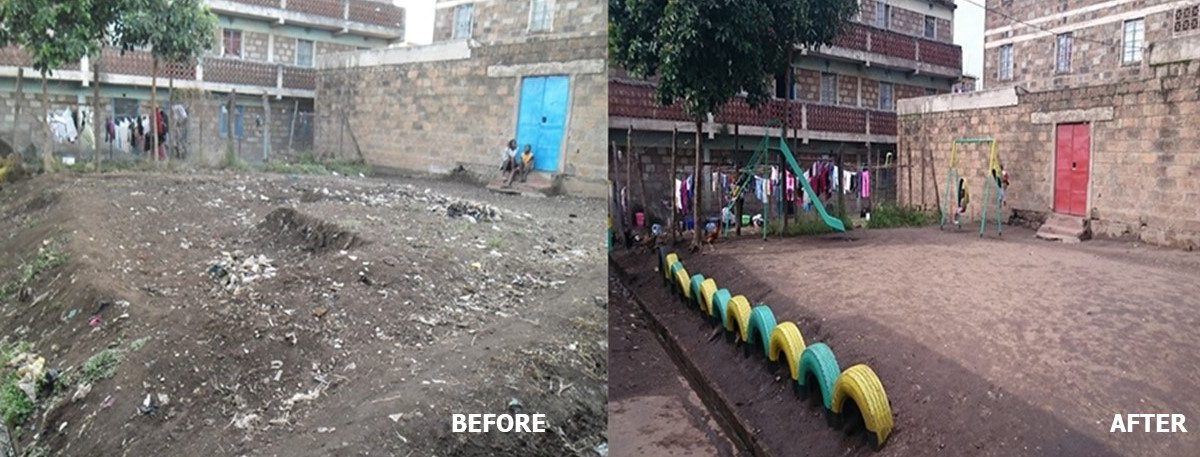
Participatory design process and regeneration of public spaces have changed usage of the spaces: drop of criminality and cleanliness of spaces have increased social interactions, even in evening hours. Few years ago, nobody would walk in streets after sunset. Nowadays, parents allow children to play outside until 8pm or later. The regenerated model street has become a vibrant pedestrian- and cyclist-friendly public space that even serves as a playground for children. The street resembles to a pedestrian zone: due to a relatively low car ownership in the neighbourhood and speed bumps, cars are limited and drive slowly.
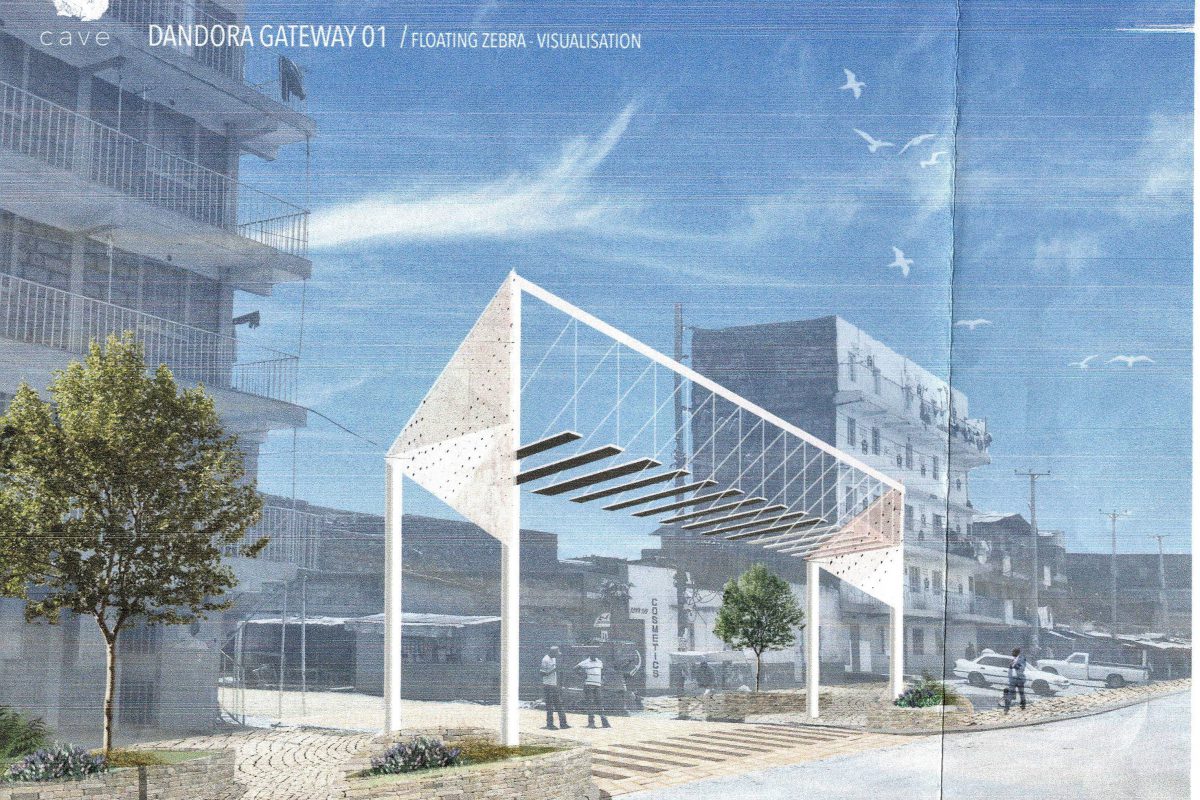 Proposal for Gateways in Dandora designed by Cave architects. The idea was introduced by children during Minecraft design workshops. The gateways are also called “Floating Zebra” and apart from beautifying the community, the innovative design also promotes road safety.
Proposal for Gateways in Dandora designed by Cave architects. The idea was introduced by children during Minecraft design workshops. The gateways are also called “Floating Zebra” and apart from beautifying the community, the innovative design also promotes road safety.
Both courtyards and streets are multifunctional spaces. Model Street is the best example: it is a place where people interact around economic and social activities; mobility is only one of many functions. People shop in kiosks skirting the street or at street vendors‘ walking and sitting around; women make bead bracelets sitting on the street and talking with their peers; children run, cycle and even roller-skate: one resident has opened a small business to hire roller-skates and give lessons. In addition to these everyday activities, DTL has been programming events to activate the street: movie screenings or Building Parties, during which community cleans the street, plants the trees and paints the facades. Children are the most active during these events and music with bouncing castle fills the street up with children. Currently, DTL is painting game patterns such as hop, skip and jump on the street and discussing with public authorities the closure of the street for motorised vehicles every Saturday for children to play in completely safe conditions.
Inside courtyards, functions of spaces can vary throughout the day: during the day, the space is a playground for children (some schools pay the youths maintaining the courtyard to use the space as a school playground) and at night, it becomes a parking. A right organization of functions maximises benefits of spaces for the whole community and the productive function of spaces ensures their sustainability.
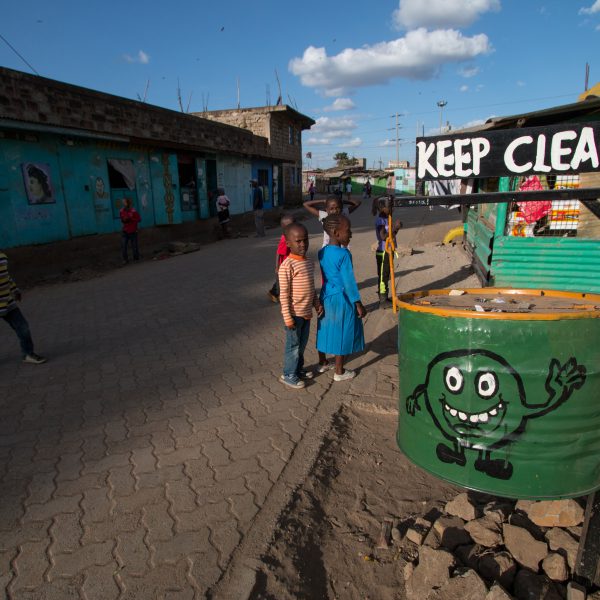
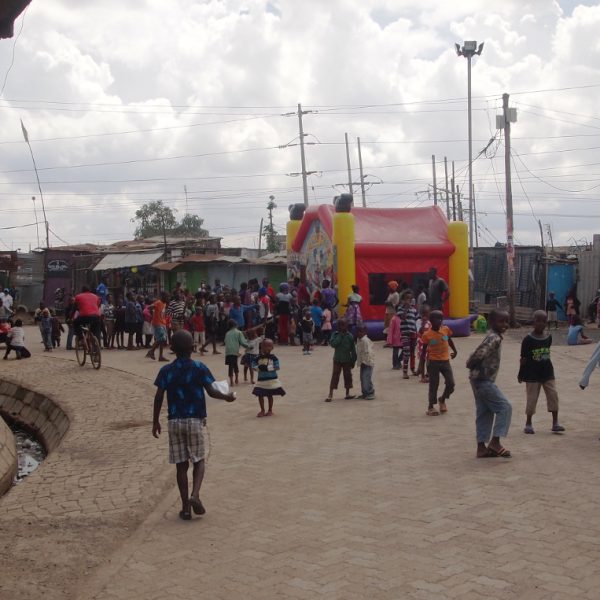
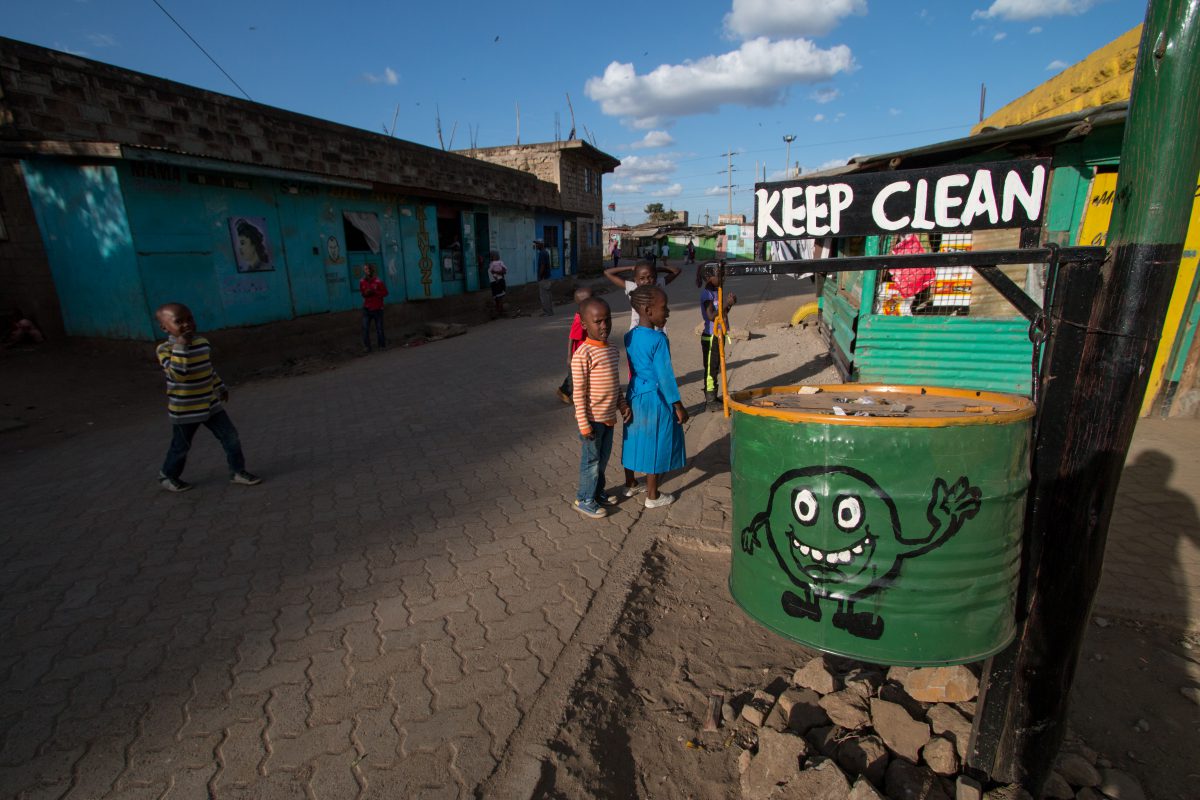
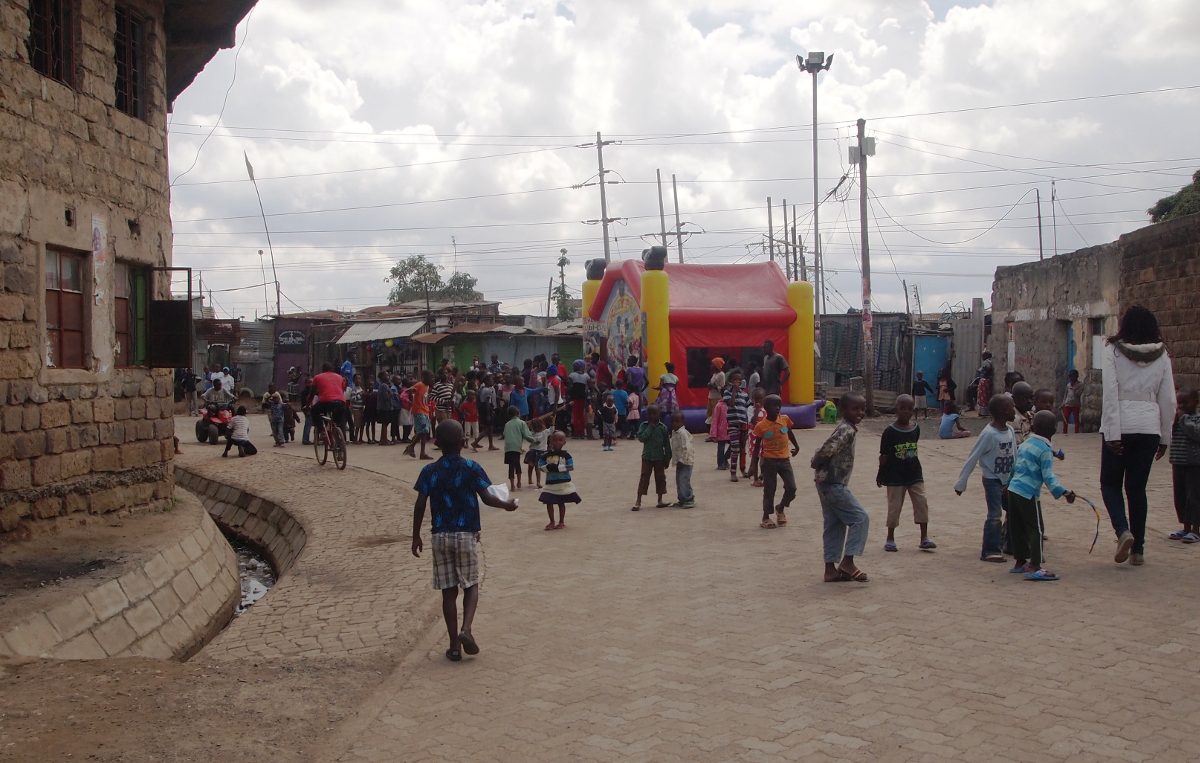
Our case demonstrates that community-led transformations of public spaces have a great potential to create child-friendly environment. Through placemaking activities, DTL implements a comprehensive approach to public space regeneration, addressing design, use and organization of functions of spaces. All three perspectives are complementary and crucial to create places that respond to the needs of users – and children in particular. DTL has not only transformed the neighbourhood, it has transformed mindsets. Unemployed youths were shown they can also become changemakers and improve their environment. Children need to be perceived as the key changemakers and provided with space to share their perceptions and suggest ideas. Children are often the best innovators and it is easier to change mindsets of children than adults. By engaging children in public space regeneration, we can create child-enabling environment and grow a next generation of responsible citizens.
Interested? Join The City At Eye Level and share your story!
Discover more1. Dandora Transformation League received Dubai International Award for Best Practices 2017 in the category Best Practice Transfer Award in Local Implementation – Urban redevelopment and redesign of urban spaces for its courtyard system for management of public spaces.